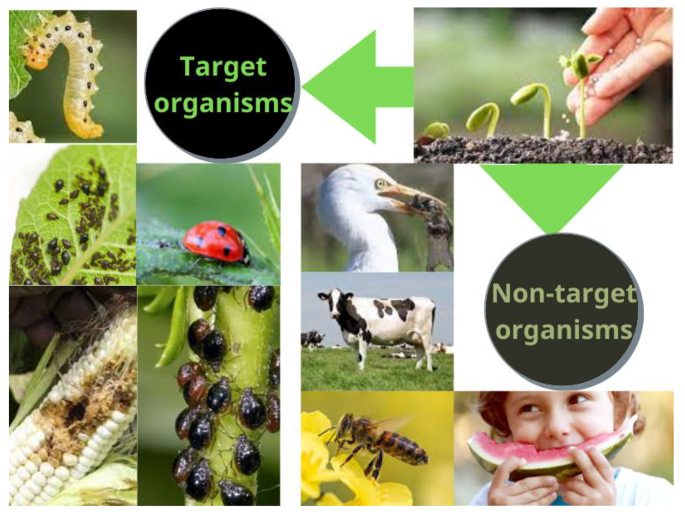Eco Bed Bug Exterminators Dc Fundamentals Explained
Eco Bed Bug Exterminators Dc Fundamentals Explained
Blog Article
How Eco Bed Bug Exterminators Dc can Save You Time, Stress, and Money.
Table of ContentsThe Single Strategy To Use For Eco Bed Bug Exterminators DcThe Eco Bed Bug Exterminators Dc StatementsUnknown Facts About Eco Bed Bug Exterminators DcThe Basic Principles Of Eco Bed Bug Exterminators Dc Little Known Facts About Eco Bed Bug Exterminators Dc.
Because pesticides are harmful, they are likewise possibly harmful to people, animals, various other microorganisms, and the setting. People that make use of pesticides or regularly come in contact with them must understand the relative poisoning, possible health results, and preventative procedures to minimize exposure to the items they utilize. Danger, or danger, of making use of pesticides is the potential for injury, or the degree of risk associated with utilizing a pesticide under an offered set of conditions.
Applicators can decrease or almost remove direct exposure-- and hence decrease risk-- by complying with the tag instructions, using individual protective clothing and tools (PPE), and handling the pesticide effectively. For instance, more than 95 percent of all chemical exposures originate from facial exposure, primarily to the hands and lower arms. By putting on a set of unlined, chemical-resistant handwear covers, this kind of direct exposure can be almost removed.
The hazardous results that occur from a solitary exposure by any type of route of access are described "acute impacts." The four courses of direct exposure are facial (skin), inhalation (lungs), oral (mouth), and the eyes. Acute toxicity is established by checking out the facial poisoning, breathing poisoning, and dental toxicity of examination pets.
Eco Bed Bug Exterminators Dc Fundamentals Explained
Intense toxicity is measured as the quantity or focus of a toxicant-- the a.i.-- needed to kill half of the animals in an examination population. This step is usually revealed as the LD50 (dangerous dosage 50) or the LC50 (deadly focus 50). In addition, the LD50 and LC50 worths are based on a solitary dosage and are recorded in milligrams of pesticide per kilo of body weight (mg/kg) of the examination animal or partially per million (ppm).
The reduced the LD50 or LC50 value of a pesticide product, the higher its poisoning to humans and animals. Chemicals with a high LD50 are the least toxic to people if made use of according to the directions on the item tag. The chronic poisoning of a pesticide is figured out by subjecting test pets to lasting direct exposure to the active ingredient.
The persistent poisoning of a pesticide is much more challenging than acute poisoning to figure out through lab evaluation. Products are classified on the basis of their relative severe poisoning (their LD50 or LC50 values). Chemicals that are categorized as highly harmful (Toxicity Classification I) on the basis of either dental, facial, or breathing poisoning must have the signal words threat and poisonous substance printed in red with a head and crossbones icon plainly displayed on the front panel of the plan label.
The intense (solitary dose) dental LD50 for pesticide products in this group varies from a trace total up to 50 mg/kg. Exposure of a couple of declines of a product taken by mouth can be deadly to a 150-pound person. https://www.flickr.com/people/200363142@N08/. Some pesticide items have just the signal word threat, which tells you nothing about the intense poisoning, just that the product can cause extreme eye damages or extreme skin irritation
The Ultimate Guide To Eco Bed Bug Exterminators Dc
In this group, the acute dental LD50 ranges from 50 to 500 mg/kg. A tsp to an ounce of this product could be fatal to a 150-pound person (bed bug spray). Chemical items identified as either somewhat harmful or relatively harmless (Poisoning Groups III and IV) are needed to have the signal word care on the pesticide tag

All chemical poisoning worths, consisting of the LD50, can be found on the product's Product Safety and security Information Sheet (MSDS) - bed bug heater rentals. Chemical tags and MSDS can be obtained from merchants or manufactures. Furthermore, many items also know that can be located on the Internet. The signs of pesticide poisoning can vary from a mild skin inflammation to coma or even fatality.
Due to the fact that of prospective wellness concerns, pesticide customers and handlers must acknowledge the usual indications and signs of pesticide poisoning. The results, or symptoms, of chemical poisoning can be broadly defined as either topical or systemic.
The Ultimate Guide To Eco Bed Bug Exterminators Dc
Dermatitis, or swelling of the skin, is approved as the most frequently reported topical effect associated with chemical direct exposure. Some individuals tend to cough, wheeze, or sneeze when exposed to chemical sprays.
This sign usually subsides within a few minutes after a person is gotten rid of from the exposure to the irritant. Nevertheless, a response to a chemical item that triggers someone not just to sneeze and cough but likewise to develop extreme intense breathing signs is most likely to be a true hypersensitivity or allergy.
Systemic results are quite different from topical impacts. They usually occur away from the initial point of call as a result of the pesticide being taken in into and dispersed throughout the body. Systemic impacts commonly include queasiness, vomiting, exhaustion, frustration, and intestinal disorders. In sophisticated poisoning instances, the person may web link experience changes in heart rate, trouble breathing, convulsions, and coma, which might lead to fatality.
Report this page